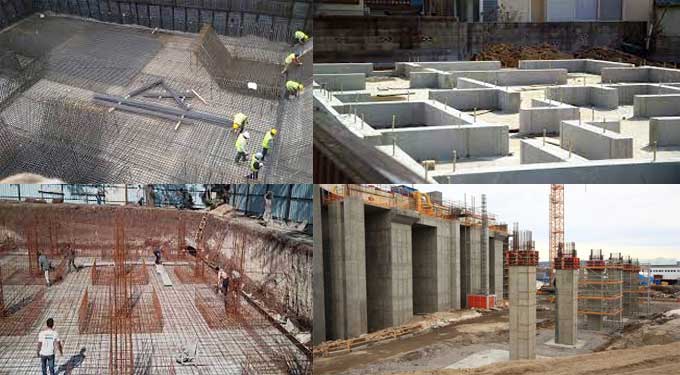
Building Foundation: 4 ways to make them better & its Failure
If there is no solid foundation below, the top building portion won't be well supported and may become dangerously unstable, and other concerns may arise.
You may have heard that a firm foundation is essential for a sturdy building. Any such problem can be prevented by implementing some basic preventive and combative measures. Stability is crucial when it comes to laying a solid foundation. There can be severe consequences, including irreversible structural damage.
Soil Checking
Ground inspections can be ignored, leading to instability in the future. Before beginning any work on the ground, it is important to check its condition of it. To build a strong foundation, it is crucial to consider the type and condition of the soil.
If you want to inspect the soil before drilling in other prime locations, your structural engineer or architect may be a reliable source.
- Cracks in the masonry are the most likely problem. As clay-like soil gets wet, it expands and contracts frequently. Every time the building moves, cracks appear, and eventually, the foundation settles. There is a greater likelihood of this problem occurring in areas with excessive rainfall or simply during periods of heavy rainfall.
- An expert will be able to assist you in fixing the problem. The contractor will resolve the issue immediately and offer you suggestions on how to forestall future cracks. These recommendations may include reevaluating your soil, groundwater, and grading.
- Pressure grouting or slab jacking may be necessary to compensate for depressions in walkways or terraces. If doing so, just make sure you aren't changing the drainage and sending it directly toward your building. It will defeat the purpose of re-grading and grouting.
Excavation Process
Ensure the ground is free of small stones, rocks, pebbles, twigs, roots, etc. The foundation construction process may be hampered by them. A specific slope level must be maintained while grading the soil by removing waste material.
The ground should only be dug to the required depth. An excavation contractor may be able to assist you in getting accurate results.
Create the Foundation
Before proceeding, ensure the concrete base is free of any loopholes.
- To begin building the foundation, the footings must be installed. To create foundations, you would either pour concrete directly into trenches or into wood forms. Based on the type of foundation you plan to build and the type of soil you have, it will vary.
- For concrete to be stronger and more crack resistant, it needs reinforcement. There is no harm in installing rebar for the small additional cost.
- Concrete should be poured without any air gaps, as this will cause even more cracks in the foundation. High quality sealer should be used to seal the footings.
- You don't overlook minute details such as concrete mixture, water content, depth of layer, etc. Build the foundation successfully with the help of a reputable concrete contractor.
Process of Foundation Completion
Finally, smooth the top layer of the foundation with concrete finishing tools such as hand floats & trowels. Once the sealer has dried, apply a second coat to get rid of any remaining moisture. It is possible to use acrylic-based sealers both as a curing compound and as a sealer.
Strong foundations require the utmost care to be built. Depending on the soil characteristics as well as your requirements, you should consult a concrete contractor for help customizing the basis.
The benefit of obtaining expert help is that a strong foundation can last for many years to come. In addition to building a stable building from the ground up, a solid foundation is critical. From the field to the end, it's also how major buildings are built. Ensure you don't have any long term problems that could cause you continuous headaches.
Proper Reason of House Foundation Failure
Curing Too Soon
The strength of concrete can be reached at 3,000 psi after a slow curing process. Wrap it in plastic, mist it with water, and keep it damp for at least three days.
Pour Interruption
You fill out one concrete form at a time. It is likely that you will experience cracks and leaks if you stop and return the next day to finish the work.
To get more details, watch the following video tutorial.
Video Source: Construction Tech
Nonporous Backfill
In the event of a freeze-thaw cycle, clay or organic soils can hold water like sponges, leading to foundation cracks.
Compaction Issue
When slabs are poured over crushed stone that's not firmly tamped, they tend to settle and crack.

Requirements of Slab Foundation
Similar requirements apply to slab foundations: a vapor proof, reinforced concrete pad sitting on a crushed stone bed. These two types of house foundations differ primarily in the way the slabs are insulated against frost.

